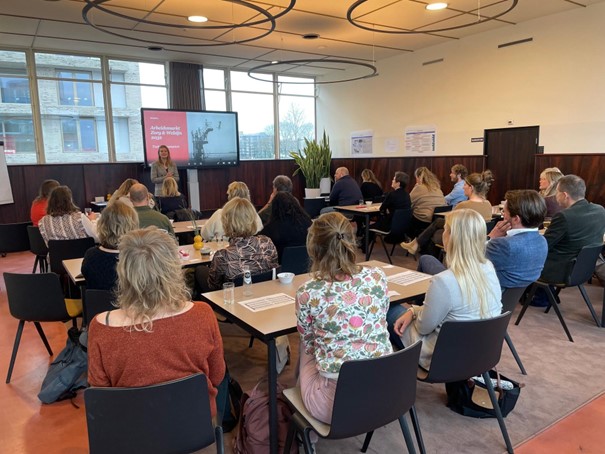Future scenarios for the labor market in care and welfare in 2033
Aging: it’s been talked about in healthcare for years. This is not surprising, when you consider that the care and welfare sector in the Netherlands is already under pressure, and how much older the population will get in the near future. The personnel shortage in 2033 is estimated at 232 thousand workers.

The challenge
There is no simple solution to the shortage, but ideas are plentiful. Commissioned by the Care and Welfare Labor Market Program (AZW), Rebel is investigating “imaginable” scenarios for the future that involve both some imagination and sufficient realism.
How much more efficient can employees become through technological innovation? To what extent does informal care and support offer a solution to staff shortages?
The challenge in each case is to determine the way in which the changes take place (‘mechanisms’) and then what effect this has on the labor market. We do this using several future scenarios for the entire care and welfare sector, one of the largest and most important sectors in The Netherlands.
The appoach
Together with the work field, we search for the greatest possible, but at the same time realistic impact on the labor market shortage. We analyze scientific literature and interview independent experts, decision-makers and policymakers in the healthcare sector. We summarize this in an ‘impact tree’ for each scenario. Such an effect tree shows which ‘mechanism’ has which effect on the labor market shortage in 2033.
We subject the elaboration to a critical test by care and welfare professionals. After all, they have the best insight into what can work in practice. During two interactive sessions, we ask them to think critically about what the world of care and welfare will look like in 2033. We also ask these professionals to assess whether the scenarios are realistic. Are we overestimating the effects? Are we paying enough attention to the impact on their daily work?
With these outcomes, we calculate the expected impact on the labor market in 2033. For this we use the Care and Welfare Forecast Model.
We put the scenarios side by side to see where they interact: where do they reinforce each other, and where do they not? This produces a number of coherent future images with valuable, qualitatively and quantitatively well-founded information about the possible labor market for care and welfare in 2033. It is then up to policymakers to determine where they want to focus their efforts to address the shortage.
The duration of our assignment is September 2023 to May 2024.
Impact
Our research will soon allow administrators and policymakers to make better decisions to reduce the labor market shortage in health and welfare.


